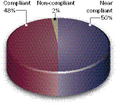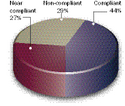Banking on the environment
19 December 2009Banks these days want to be seen to be green and that is set to have an ever greater impact on their lending policy
Summary
• Several banks identify forestry as a “sensitive” sector.
• The Equator Principles are a benchmark for assessing the environmental risk of project financing.
• HSBC’s standard is based on the FSC principles and criteria.
• Standard Chartered encourages FSC certification.
• Barclays regards certification as a “positive indicator”.
When a timber company approaches a bank for finance, it is likely the institution will check not only the company’s fiscal health, but also increasingly its environmental credentials.
“As a bank, the biggest impact we have on society and our environment is through our support of the business activities of our clients. Our financing decisions – who and what we finance – enable us to make our strongest contribution to sustainable development,” said Yulanda Chung, head of sustainable business at Standard Chartered.
In addition to the Equator Principles, an industry benchmark for assessing and managing social and environmental risk in project financing – for example, the construction and operation of a new sawmill – the banks have their own sustainability policies, identifying “sensitive” sectors, including forestry. These position papers place an emphasis on certification.
Standard Chartered provides guidance to its frontline staff on 13 issues, including child labour, climate change, mining, and forestry and palm oil.
“Our forestry statement includes upstream production companies and downstream users and is applied to all SME and Wholesale Banking financial services,” said Ms Chung.
The bank will not provide finance to commercial logging operations in high conservation value forest, primary tropical moist forest, or to those involved in illegal logging. It also encourages FSC certification, or an equivalent.
“Where our clients don’t meet certification we will work with them to help them develop a creditable path towards achieving certification,” said Ms Chung.
Conditions
This year the Corporate Finance division underwrote an IPO (initial public offering) for a Chinese forestry client and made achieving FSC certification a condition. “The client agreed to use its best endeavours to obtain FSC certification and chain of custody certification within two years,” said Ms Chung.
HSBC was one of the first banks to recognise the growing need for companies in the timber trade to manage the social and environmental impacts of their supply chain, introducing its Forest Land and Forest Products sector policy in 2004. Since then it has updated the policy to ensure it can be applied to all countries and Banktrack’s 2007 report, Mind the Gap, identified HSBC has having “the best forestry policy”.
“Since 2004, we have implemented an active forest product policy to support both local and international sustainable business development,” said Francis Sullivan, the bank’s adviser on the environment.
HSBC uses its Sustainability Risk Rating system to track and rate corporate customers in high-risk sectors such as forestry. Under its Forest Land and Forest Products sector policy, one of five sector sensitive policies, its standard is based on the FSC principles and criteria and its commitment to the Equator Principles.
“National and international schemes vary between countries which is why we ask for certification which meets our standards. Where required, we use third-party technical experts to determine the extent to which national and international schemes meet our certification standard,” said Mr Sullivan.
HSBC will also support “near-compliant” clients who are working towards compliance with its policy.
The bank considers five years to be sufficient time for most clients to demonstrate progress towards certification. “We will, and have, exited a commercial relationship if it becomes clear that our client was not committed to achieving compliance with the policy,” said Mr Sullivan.
Key risks
Barclays also takes into account environmental risk issues and has identified key risks in several sectors, such as forestry and timber. While the bank does not require third-party certification, having it certainly helps.
“We are looking for positive indicators in assessing a client’s risk profile,” said Chris Bray, head of environmental risk management. “FSC or PEFC certification is one of the positive indicators. If it isn’t there, that would lead to another layer of questioning.”
This led to Barclays refusing finance to a timber agent dealing in West African hardwoods who could not provide evidence of sustainable forest management. “The absence of that positive indicator left us in a position where we couldn’t progress,” said Mr Bray.
The environmental regulations of a country are also taken into account. “In countries where there might be a weaker regulatory regime then we may be more stringent,” said Mr Bray. “We try not to take the role of a surrogate environmental regulator when we’re working in a country which has good legislation. That’s the starting point for any relationship. We require clients to be operating in compliance with all relevant environmental laws and regulations.”
And he is quick to point out that assumptions cannot be made. “You have to look at these things on a case by case basis,” said Mr Bray. “It’s very much down to the quality of the management operating the business.”

